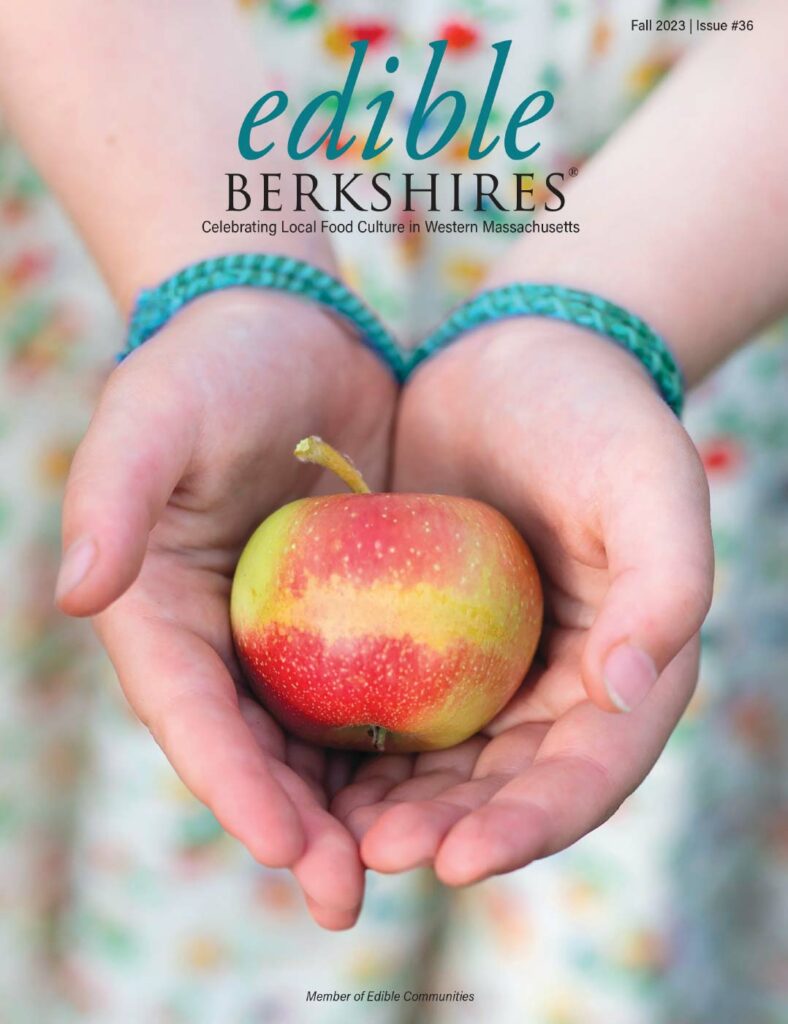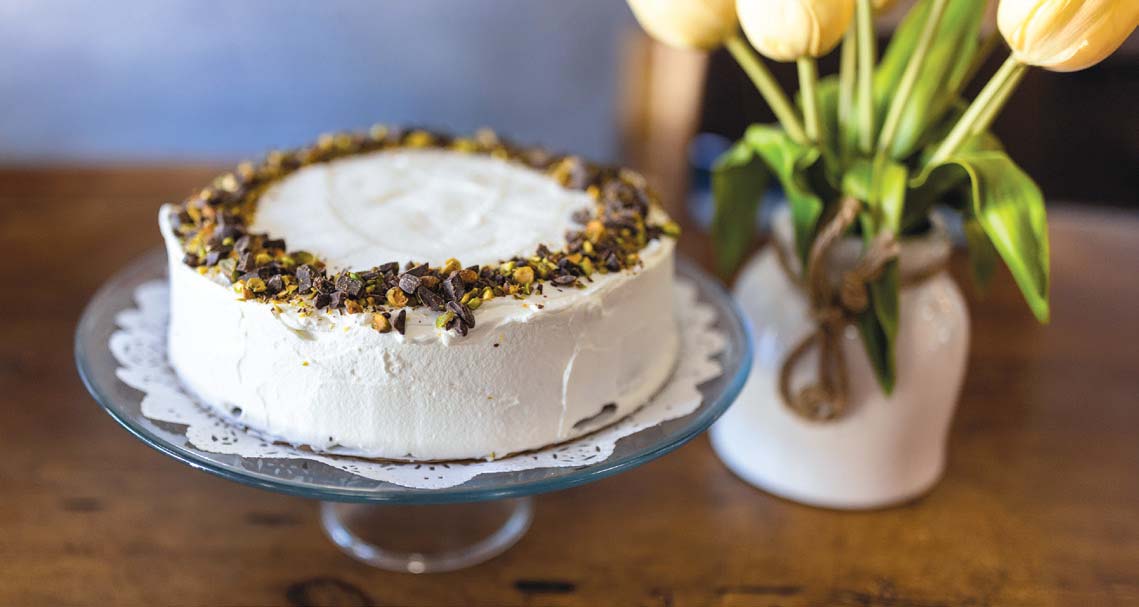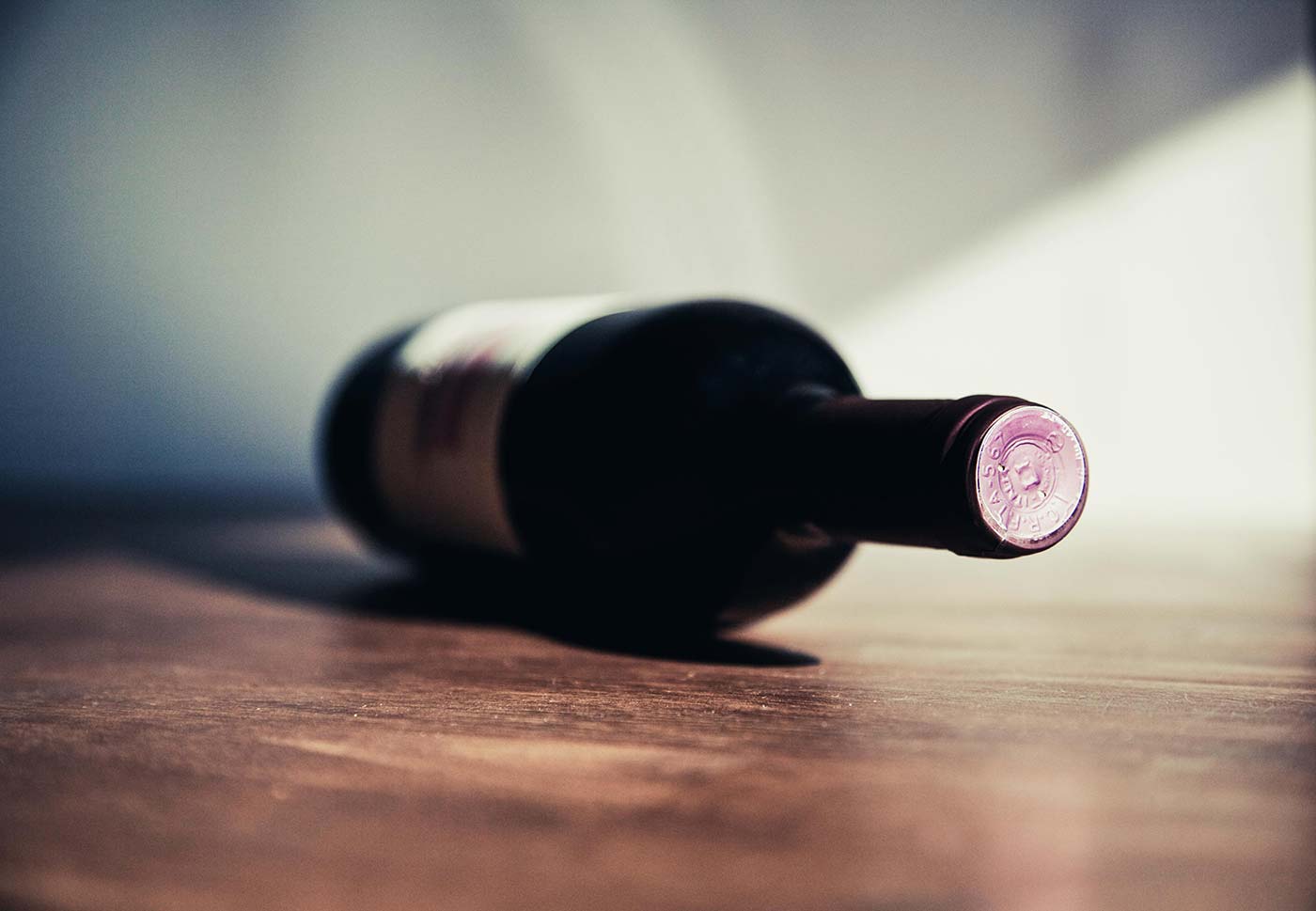
ILLUSTRATIONS BY ABIGAIL LANOUE
Why start seeds indoors at all? I start a few plants from seed mostly for my own satisfaction and a personal sense of pride. When I start my own vegetables, I can control the organic nature of the seed-starting mix, the seeds, the fertilizer, and the pest controls from seed to seedling to plant to harvest.
SEED STARTING BASICS
- Each seed is a potential plant with large quantities of fruit or produce.
- Not every seed will survive long enough to provide produce. Expect some to die!
- Plants take up space, and vegetables particularly need 6 to 10 hours of daylight (or more!) in the garden over 5 to 12 weeks to grow well.
- Will you be able to monitor all the seeds you start?
- Produce should be eaten or offered to others. Plan accordingly: Will you or your family eat what you grow? Do you have time to care for the plants until harvest? Will you be able to find storage or new homes for extra produce?
You will need a space for your seedlings to get many hours of bright daylight and regular water in a protected location. A protected porch or cold frame would be ideal, but I’ve muddled through with a south-facing window and trips to a covered porch on warm sunny days.
I organize my seeds in groups of starting dates as determined by the last average frost date on my property. Spring seed starting and garden planting revolves around this all-important date. A spring frost can still occur later than the average date but is statistically less likely. My average frost date is about May 20. The Old Farmer’s Almanac has an online interactive link to help determine your last frost date based on your zip code (almanac.com/gardening/frostdates).
Some seeds need more time to germinate and grow indoors (in 60o to 65o temperatures) to achieve a good size, ready for transplanting out in my New England gardens. Even though I started them around the same time indoors, I may not plant them out at the same time. Some seeds can be started indoors two weeks before the last frost date, and others perform better if sown 12 weeks before the last frost date. Early starters typically can be transplanted outside before the last frost, too.
I clip seed packs together based on the seed-starting date. However, each plant may have a different date for planting outdoors. Onions and celery (or celeriac) can be started in February, but onions can be transplanted outdoors four weeks before the last frost (mid-April for me), while celery should stay protected until one week after the last frost date—late May! Both of these can be seeded directly into the garden at their “transplant” date, but your harvest will be later in the season.
For cold-tolerant plants that I sow directly outdoors, I might sow some early and do another crop two weeks later if the first group germinates unevenly. Beets, mustard greens, Brussels sprouts, and kale would be examples.
For heat lovers, like nightshade plants—tomato, eggplant, peppers—transplanting outdoors a week or two after the last average frost date will yield better plants and more fruit. Though they might survive the cold, the young plants would be set back for weeks making the harvest later.
Seed packets offer a range because gardens have microclimates and seasons vary. Consider all of the following as suggestions, not strict rules. Part of the beauty of gardening is the variability. I have started cool season crops pretty late and have found that if I plant them in the partial shade of other vegetables, they will still grow and produce during summer heat. The exception is beets, which need loads of sun to get started but don’t like heat.
Once inside seedlings appear, remove the dome that helped the soil retain moisture. Air circulation becomes more important. Water the seeds by lifting a pack up and add water to the tray before returning the pack to its spot. This keeps the soil evenly moist and the tender roots in place.
This is not an exhaustive list of what you can grow. I have focused on family favorites and things I want to try, and have also included flowers that attract beneficial insects and birds while providing months of color. I’ve listed both indoor start dates and outdoor planting. If you plant the seeds outdoors, you will have a later bloom or harvest as long as the weather holds. And potentially no harvest if cold, rain, or disease take over. In 2023, tomato plants suffered from too much rain, and some people had none to harvest. In 2024, many people had tomato harvests into late October, well past the local average frost date!
Best of luck and hopefully you will develop some favorites to start early!
MARCH 21–28
Start indoors for a May 2–11 garden planting
Beets can be directly sown into the garden or you can start the seed indoors in flats. If you plant indoors, you can use fewer seeds and allow the plants to get larger in size before transplanting to the garden. Because multiple globes form from one seed, transplanted beets will still need thinning. However, having one seed per planting cell can reduce the chore. I’ve read that transplanting may delay maturity, but I want my beets to grow into the fall anyway. If you grow transplants, water them every few days until you see fresh leaves emerge, which tells you the roots are growing.
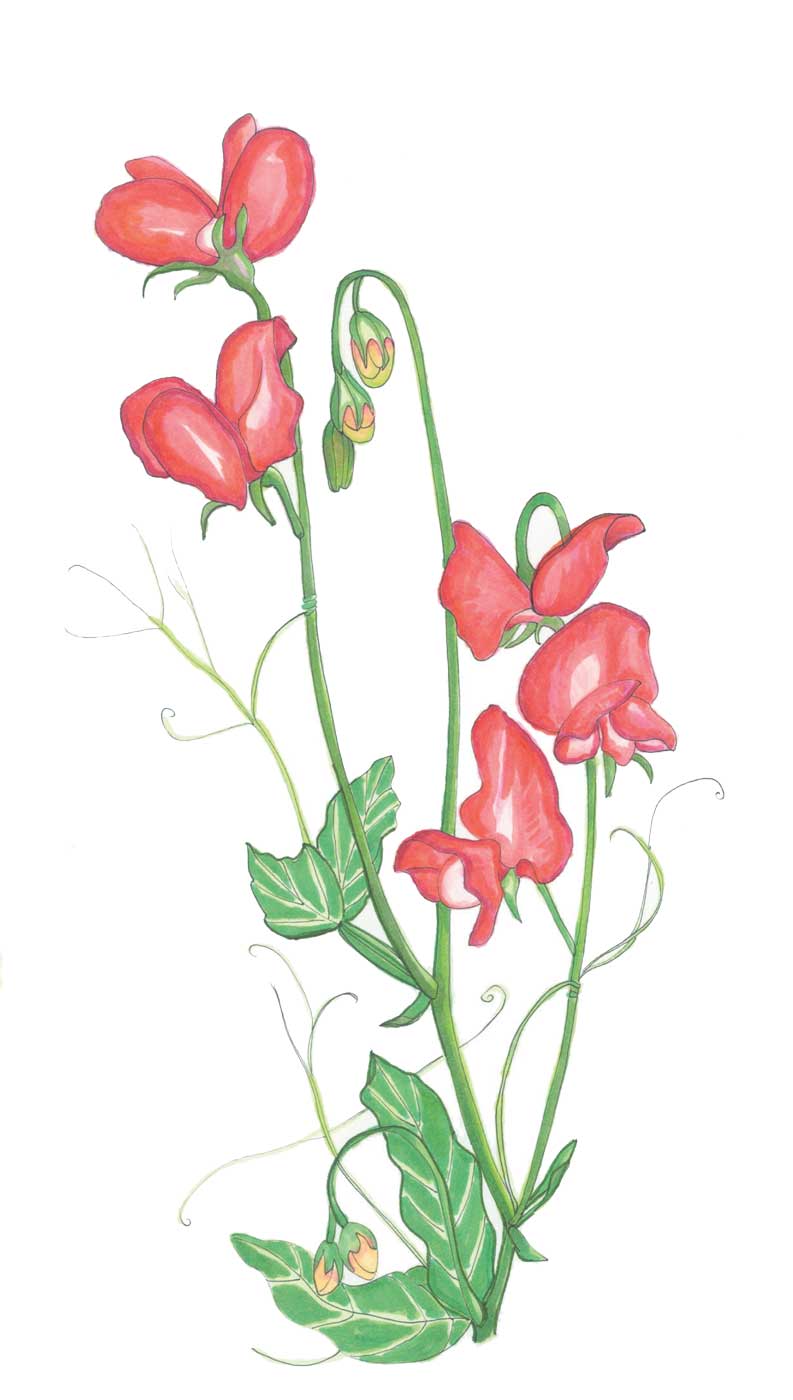
MARCH 14–28
Sow outdoors
Annual poppy seeds can be spread over the top of snow on a prepared garden bed to sink into the garden as snow melts. A fun way to see what comes up!
Sweet pea flowers seeds can be sown as soon as soil can be worked, as early as mid-March in full sun. Work soil to make it friable and deeply well-drained, and install supports for the vines that get heavy with bloom.
EARLY SPRING
Start indoors in for a June 1 garden planting
Salvia Violet Queen flowers are perennial but the same start and planting dates would be true for annual salvia. You will have blooms by late August in the first year and earlier perennial blooms in subsequent years. Ideal soil temperature for germination is 70° to 80o F so plan to use a germination heat mat or start on top of a less-efficient refrigerator. Salvia plants are also deer resistant.
MARCH 21 TO APRIL 7
Start indoors and transplant after hardening off May 20 or last frost date
Nicotiana is a large 5-foot plant that emerges from one tiny seed. Sprinkle sphagnum moss lightly over the seed so light can penetrate but the seed stays in place.
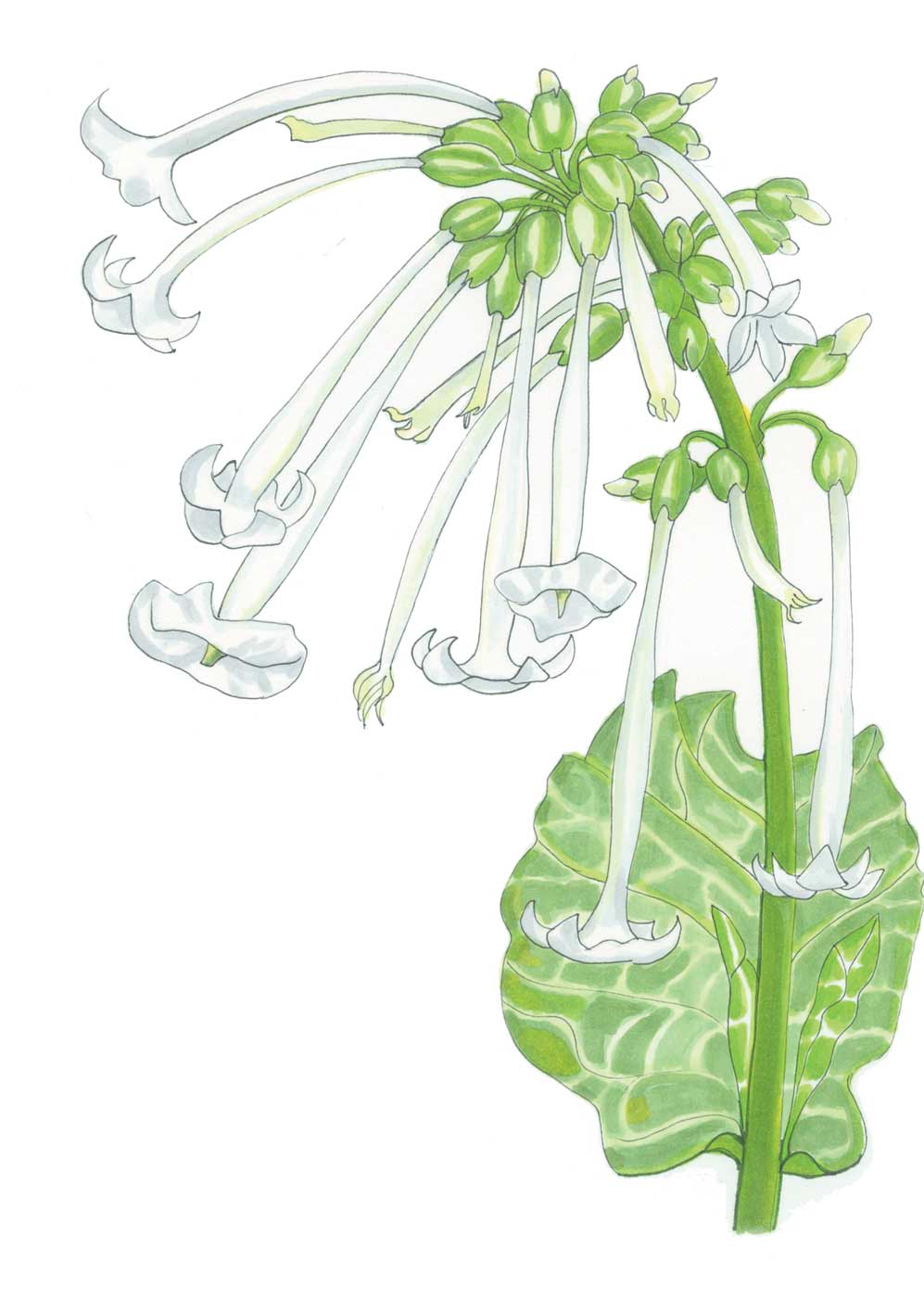
MARCH 21 TO EARLY APRIL
Best sown directly
Romaine, lettuce, and gourmet lettuce mix seeds are incredible small, so it helps to draw a small ditch in your soil surface where the seed will fall or flow with the first few waterings. Sprinkle seeds with the smallest dusting of soil to keep seeds in place but not covered. Tamp them down into the soil surface. Thin lettuce once leaves are about 3 inches tall and use the thinnings for mesclun salad mix. Thin and trim until plants are 4 to 6 inches apart, then pull the small clumps for use. Sow the seed in the garden every 2 weeks or so and you’ll have fresh greens all summer.
Peas benefit with about 12 hours of presoaking in water to soften the protective outer layer and help the seed germinate more quickly. Sow outdoors as soon as soil can be worked. If seedlings don’t emerge after 10 days, sow again. I’m starting a new type this year—Sugar Magnolia pea from Botanical Interests—because we love sugar snap peas but have a hard time seeing the ripe pods. These are purple!
Spinach could also be started indoors during these dates if that’s an easier way to control the soil moisture. Set in the garden from April 7 to April 18. Grow and thin like lettuce to have small leaves for salads until clumps are 5 to 6 inches apart. Then just harvest side leaves.
Rainbow chard should be treated like spinach. It has a somewhat sturdier leaf and is less likely to bolt so can be enjoyed later into the summer.
APRIL 12
Start indoors or plant outdoors around May 20
Cosmos mix. A full flat of cosmos seeds, approximately 3 seeds to a cell, is plenty to scatter among container, vegetable, and perennial gardens. Keep the seeds moist and warm but bring to a bright location once true leaves appear. Harden off before transplanting into the garden on May 20.

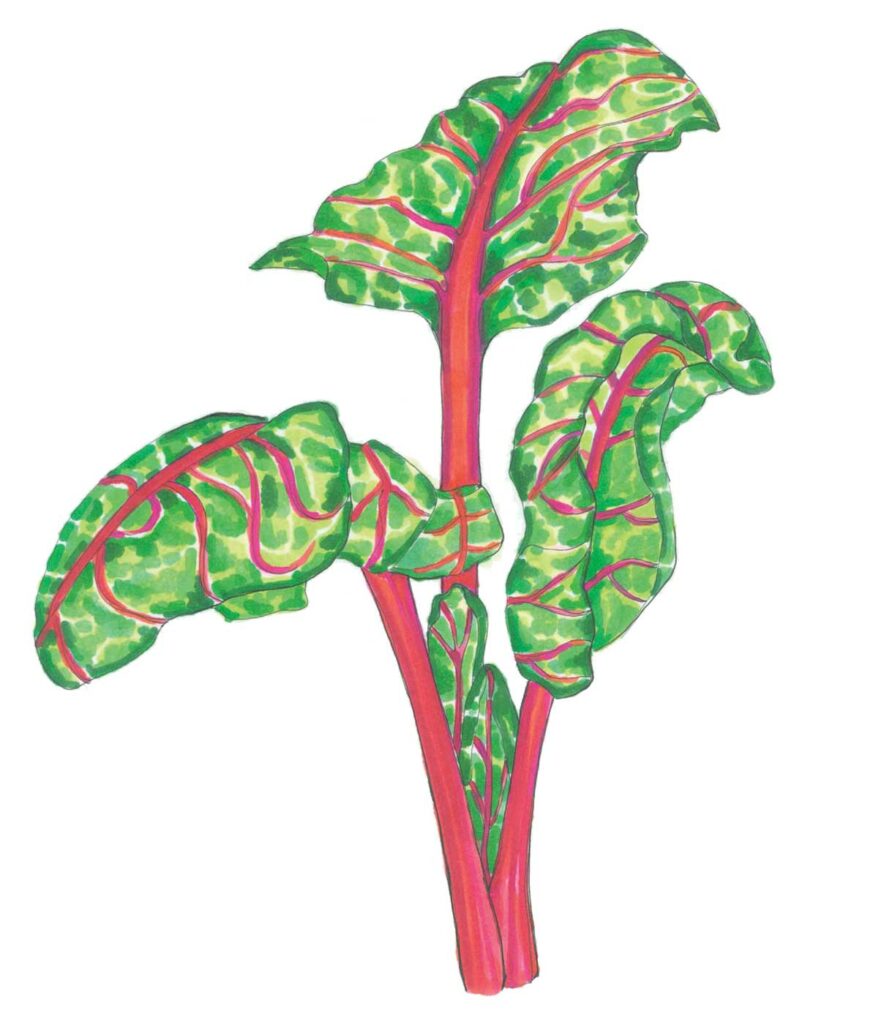
APRIL 20
Start indoors or plant outdoors around May 27
Zinnia State Fair mix. Like the full flat of cosmos, plant zinnia approximately 3 seeds to a cell and you should have plenty to use in your landscape. Keep the seeds moist and warm but bring to a bright location once true leaves appear. Harden off before transplanting.

APRIL 15–28
Start indoors for a June 5 transplanting
Heat-loving vegetables, herbs, and flowers that you start indoors should be hardened off for about a week before transplanting into the garden! Plant out about 2 weeks after the average frost date when soil temperature is consistently above 60o F.
Tomato should be started with bottom heat and bright light. Keep moist. Bring seedlings with two true leaves to a bright location to grow on and keep from getting leggy. Don’t let seedlings get cold.
Basil can be started about the same time as tomatoes indoors. Sprinkle 10 to 15 seeds over the surface of a 4-inch pot to allow seeds to root deeply. Cover with a light dusting of sphagnum moss to help prevent damping off. No need to thin seedlings with this method. Once true leaves appear, you can divide the pot in half and grow to a larger size. Divide seedlings gently when planting about 12 inches apart into the garden after soil is warm.
Sweet bell pepper is similar to tomato seedlings. Pinch back growth to encourage branching and more buds that will result in more fruit.
AROUND APRIL 18
Sow directly
Bunching onions can be sown every 3 to 4 weeks to harvest ½-inch diameter bunching onions well into fall. Alternatively, you can purchase small onion sets. These mini-onions can be planted out in April and will grow to full, typical cooking onion size by the end of the growing season.
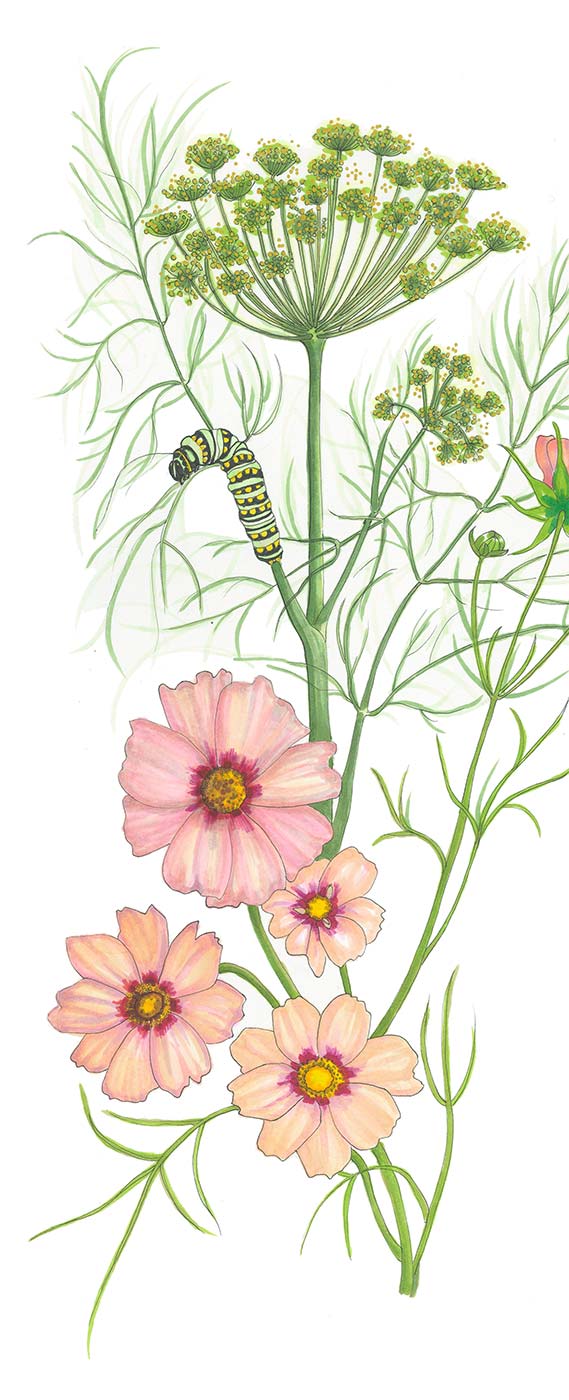
APRIL 15–30
Sow directly
Coriander/cilantro and dill. Sprinkle on soil surface and keep moist.
Carrots. Press into soil surface and keep soil moist until seedlings appear, sometimes 14 days later. Mix radish seed into the row to mark it.
Radishes. Mark the row because they germinate quickly and are ready to harvest within a month when carrot seedlings start to appear.
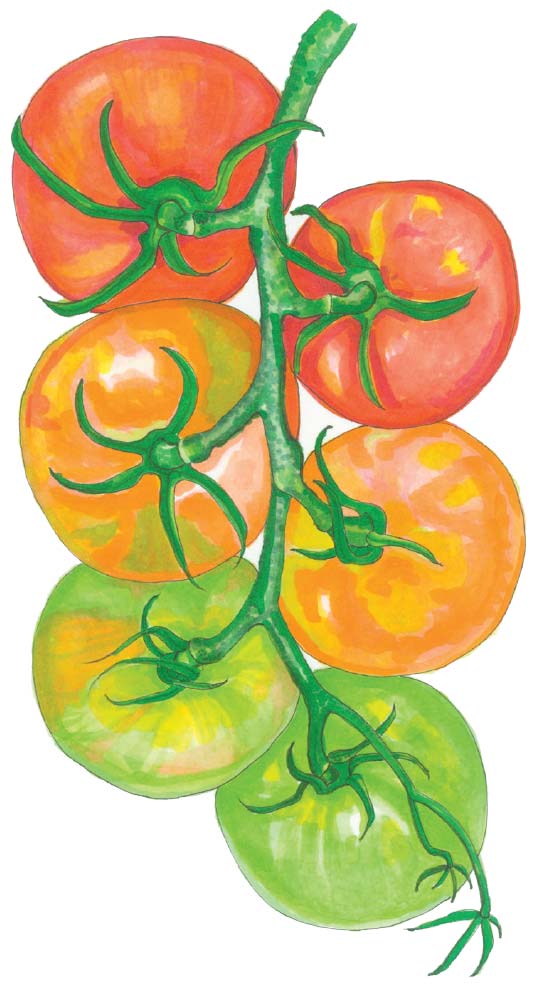
AROUND APRIL 20
Sow directly
Kale, Cabbage, and Bok Choy. Cover the newly emerging plants with light spun polyester cloth to help prevent flea beetle damage.
MAY 15–30
Sow directly, right around the average last frost date. Seeds will germinate when ready.
Green pole beans, bush beans, and tricolor beans all need warmer soils. I have waited to plant beans until after my peas are done—as late as July. I never see bean beetles on these late-to-appear plants, and the flowers have plenty of time to produce before the fall frost. Provide a tall support for pole beans at planting. Bush beans will ripen about two weeks earlier.
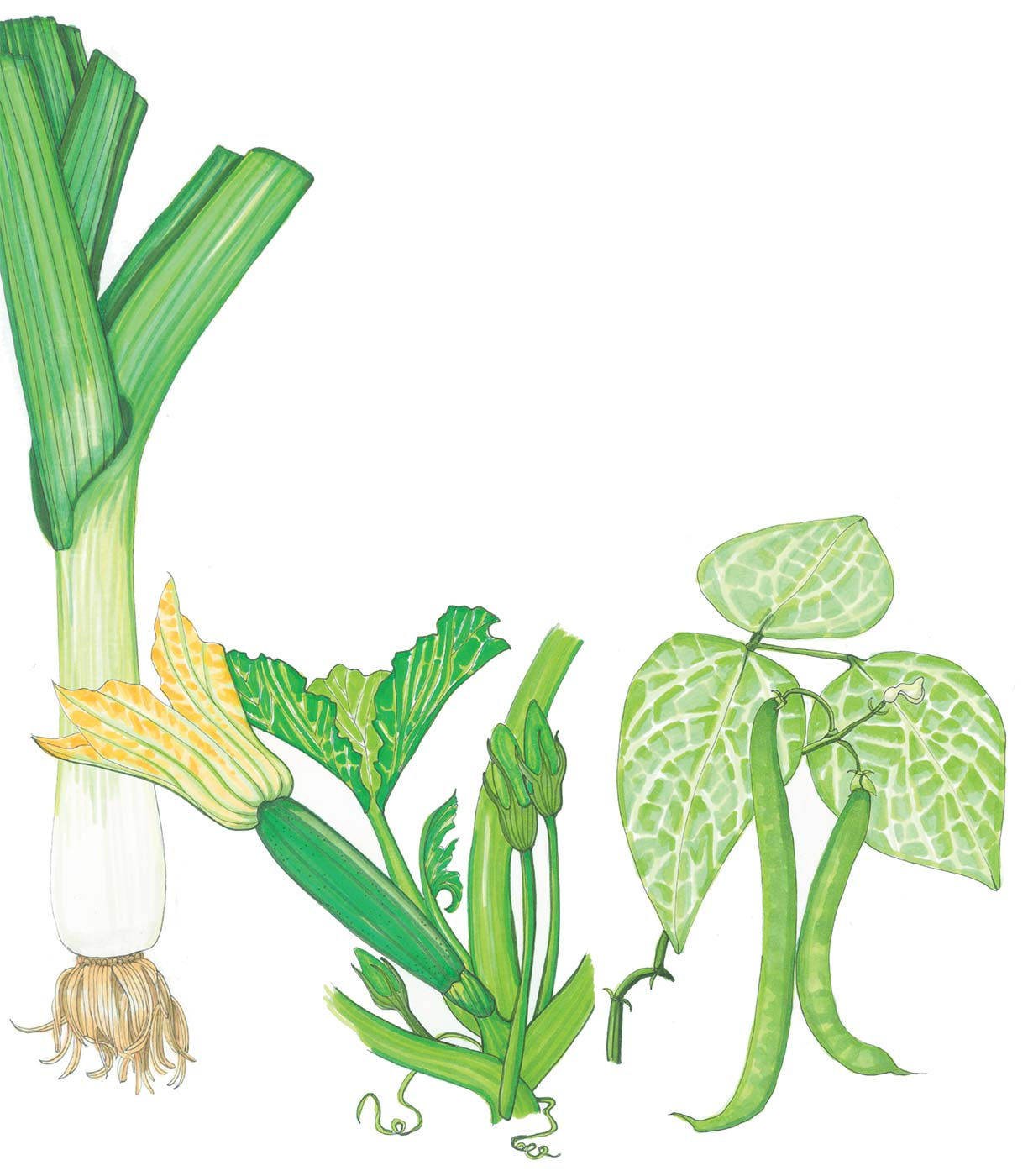
EARLY JUNE
Sow directly
Zucchini and yellow squash. Summer squash should be planted in small hills to help provide drainage and better air circulation. I also plant the seed in the center of reflective material reclaimed from my kitchen-emptied coffee bags. By reflecting light up under the squash leaves, I discourage vine borers and whiteflies from laying eggs on the leaves.
Now, enjoy the double pleasure of homegrown produce combined with the pride that you grew it all from seed!



